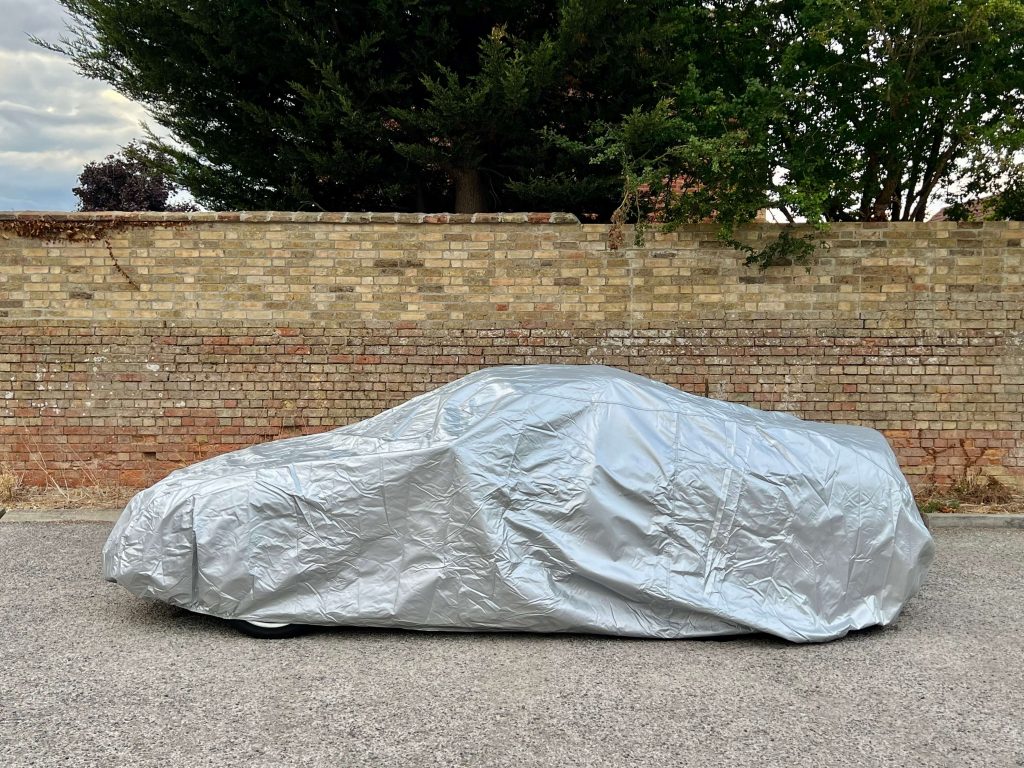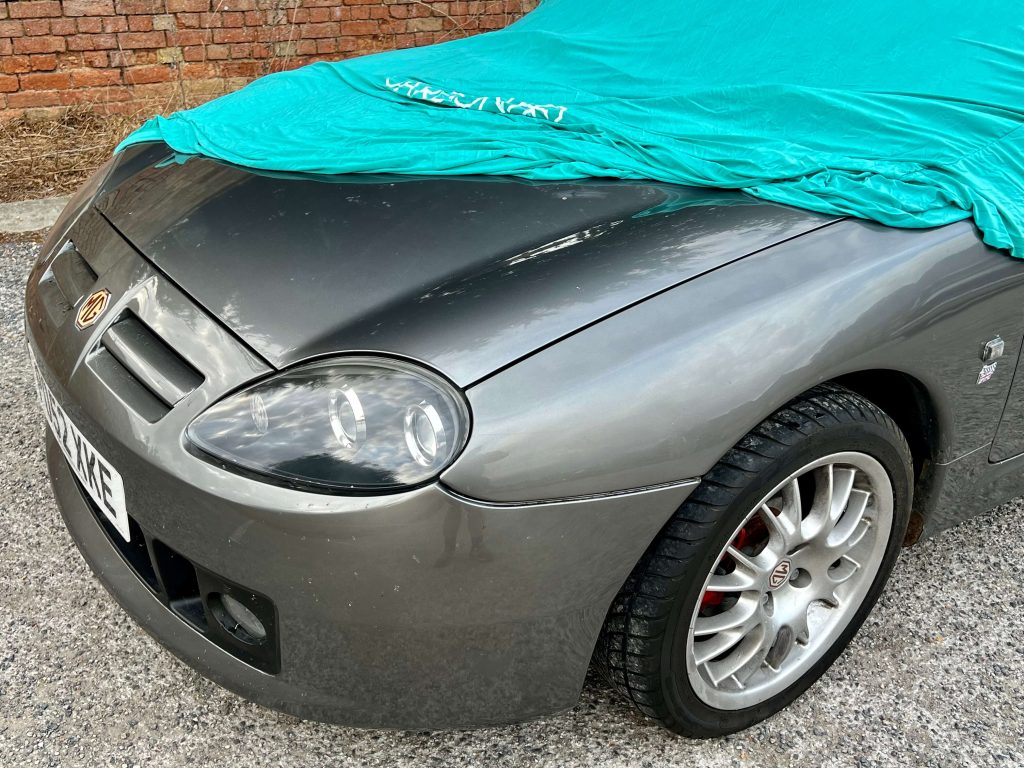Words: Craig Cheetham
Photography: Craig Cheetham
Car covers are not all equal – so what should you look for when tucking your car away for the winter?
Depending on who you ask, car covers are either a brilliant invention or one of the worst ways to try and protect your car during the winter. Yet the truth is, they are both.

Used incorrectly, a badly fitted or incorrect car cover can actually damage your paint, especially if it is allowed to move, which can scratch the bodywork, or doesn’t allow the car to breathe, which can trap moisture and advance corrosion or cause lacquer to lift.
But choose the right one for your circumstances and a good car cover will protect your vehicle, especially if it’s being kept in storage or, by contrast, is being stored outdoors during hard frosts and extreme weather – a convertible, for example, will probably thank you for protecting it from too much moisture.
So how do you choose – and what type of car cover is best for you?

What types of car cover are there?
There are a number of different types of car cover that you can buy, and the science behind them is more complex than it seems.
Indoor-only covers are often soft, breathable and lightweight – their purpose is primarily for use in dry environments, to keep dust at bay, so they rarely have any moisture-repelling capability.
If you need a cover for outdoor use, then there are a few choices. A fully waterproof all-weather car cover is suitable for all-year round use and is usually engineered in a way that it has multiple layers – a soft one that actually touches the car, a middle layer that keeps it breathable and a hydrophobic outer layer to keep the rain off. Unsurprisingly, these are often the most expensive, and it’s a common mistake for people to buy a waterproof cover instead, which is fine for throwing over your car if the heavens open at a car show, but not if you’re planning to leave your car outdoors for a prolonged period.
What are the risks of choosing the wrong one?
“I’ve lost count of the number of paint repairs I’ve had to do for people who’ve left their cars under covers for too long” says Bob Chittenden, an independent bodywork repairer in Ramsey, Cambs. “Someone will put a cover on their car in the autumn, go to get it out when the weather picks up in spring and find that all the lacquer is scratched. They’d have been better off leaving it parked up outside.”
This is because they have chosen the wrong cover, and it doesn’t help that manufacturers will often label them as ‘outdoor’ or ‘all-weather’ when they are anything but. If you’re putting a cover on a car that’s stored outside, then you need one that’s multilayered, yet is also a snug fit – ideally with adjustable straps that can be tensioned to stop it from moving around.

Which is best for my car?
First, you need to establish what your requirements actually are. If you have a garage or form of indoor storage and it isn’t damp, then an indoor car cover will do you just fine – but even then, there’s plenty of choice and some of the cheaper all-purpose covers aren’t great – a soft, high quality cover with a fleecy inner fabric will not only do the best job of protecting polished paintwork, but its close-fitting nature should also help to prevent mice and rodents from finding their way into your cherished classic. They don’t have to be prohibitively expensive, either. The green cover in our photos comes from carbon collective and costs £99.99, while we’re also fans of the Richbrook Super Soft indoor cover, which is the blue one.
For heavier duty use, if your car is being stored outside for a long period then a muti-layer outdoor cover is the only way forward. Anything inexpensive and claiming to be ‘all-weather’ or ‘waterproof’ could well end up being more trouble than it’s worth – fine if you’re leaving an open top car outside in a shower, but that’s about it.
A proper heavy-duty cover won’t be cheap – most are upwards of £200 – but you’ll save this in rectification costs. The Coverzone Apollo is the Rolls-Royce of such covers and is the best we’ve encountered, but any four-layer cover with a soft inner lining and hydrophobic (water-repellent) top surface should be up to the job, providing you secure and strap it properly.

Is a tailored cover a good idea?
Tailored covers are generally a lot more expensive than generic ones, but if you like to keep your cars long-term, then they’re a wise investment, as they’re handmade to fit the very car you’re going to keep them on, with pockets for the door mirrors and special attention given to features such as spoilers and body kits.
The same advice applies as to with general covers, in that only a proper multi-layered cover is advisable for long-term outdoor storage (indeed, a tailored option is even better here as the cover is less likely to move and damage your paintwork), while for indoor use a soft, tailored cover is not only a good way of protecting your car, but can also look quite stylish. Companies such as Specialised Covers and Classic Additions will make them to fit your exact car, but they aren’t cheap, with even the most basic versions costing from around £400.
Do you think a tailored cover is worth the investment? Let us know in the comments below.
Classic car insurance from Hagerty
Keep your classic on the road with expert classic car insurance built by car lovers, for car lovers. Rated ‘Excellent’ on TrustPilot.









